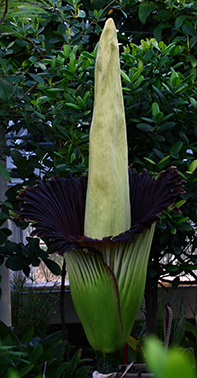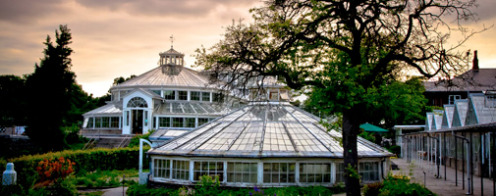Living collections
The Botanical Garden is part of the Natural History Museum of Denmark and hosts the largest scientific collection of plants in the country with a focus on the conservation of endangered plant species.
Some 8,000 species of plants grow in the garden, including meat-eating plants, orchids, cacti, useful tropical plants such as date palms and coffee trees, hundreds of wild Danish plants and trees.
The Botanical Garden is accredited by and member of Botanical Gardens Conservation International and collaborate nationally and internationally with global conservation of threatened plants.

Amorphophallus titanum (Photo: Rasmus Kloster)
The botanical gardeners and researchers of the Natural History Museum of Denmark work to maintain, develop and expand the scientific collections in accordance with international practice and conventions. The collections and their associated information are made available for research, education and outreach.
Plants are grown both in greenhouses and open-air beds, with very different conditions with regards to light, temperature, moisture, nutrition and so forth. The collections of the Botanical Garden also represent a large diversity, both with regards to geography (f.ex. the Madagascar collection), biology (f.ex. Meat-eating plants), ecology (f.ex. Bog or Steppe beds), climate (f.ex. the Palm House or the Collection of succulent plants) and systematics (f.ex. the Orchid collection or the Sorbus collection).
The living plants of the Botanical Garden are all database registered. They represent around 300 families, 2,700 genera and 8,000 species. Furthermore, the garden hosts a number of experimental plants, which are not registered in a database.

Would you like to know about…
Contact
Head of Botanical Garden
Tonni Eilersen
teilersen@snm.ku.dk
